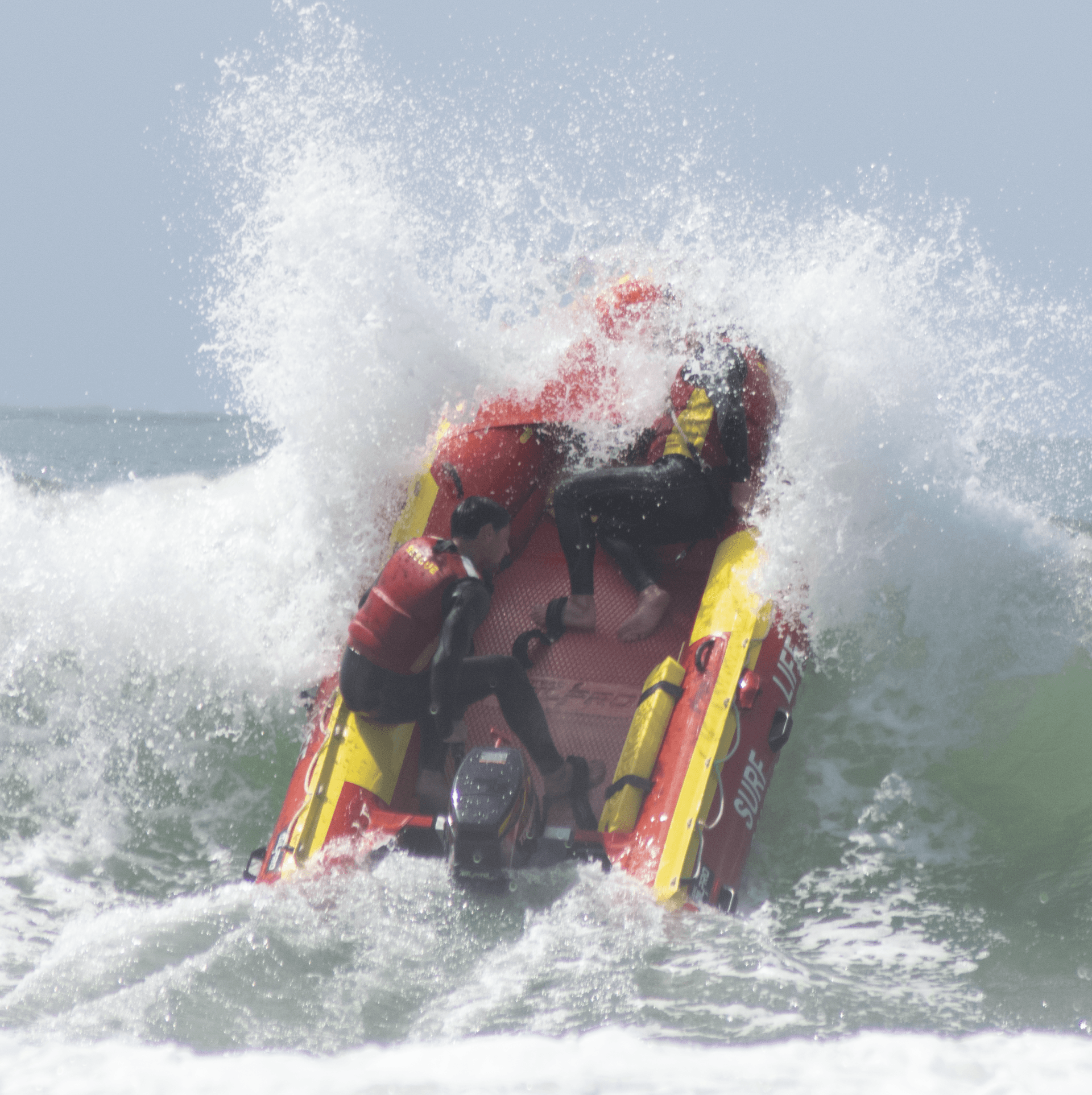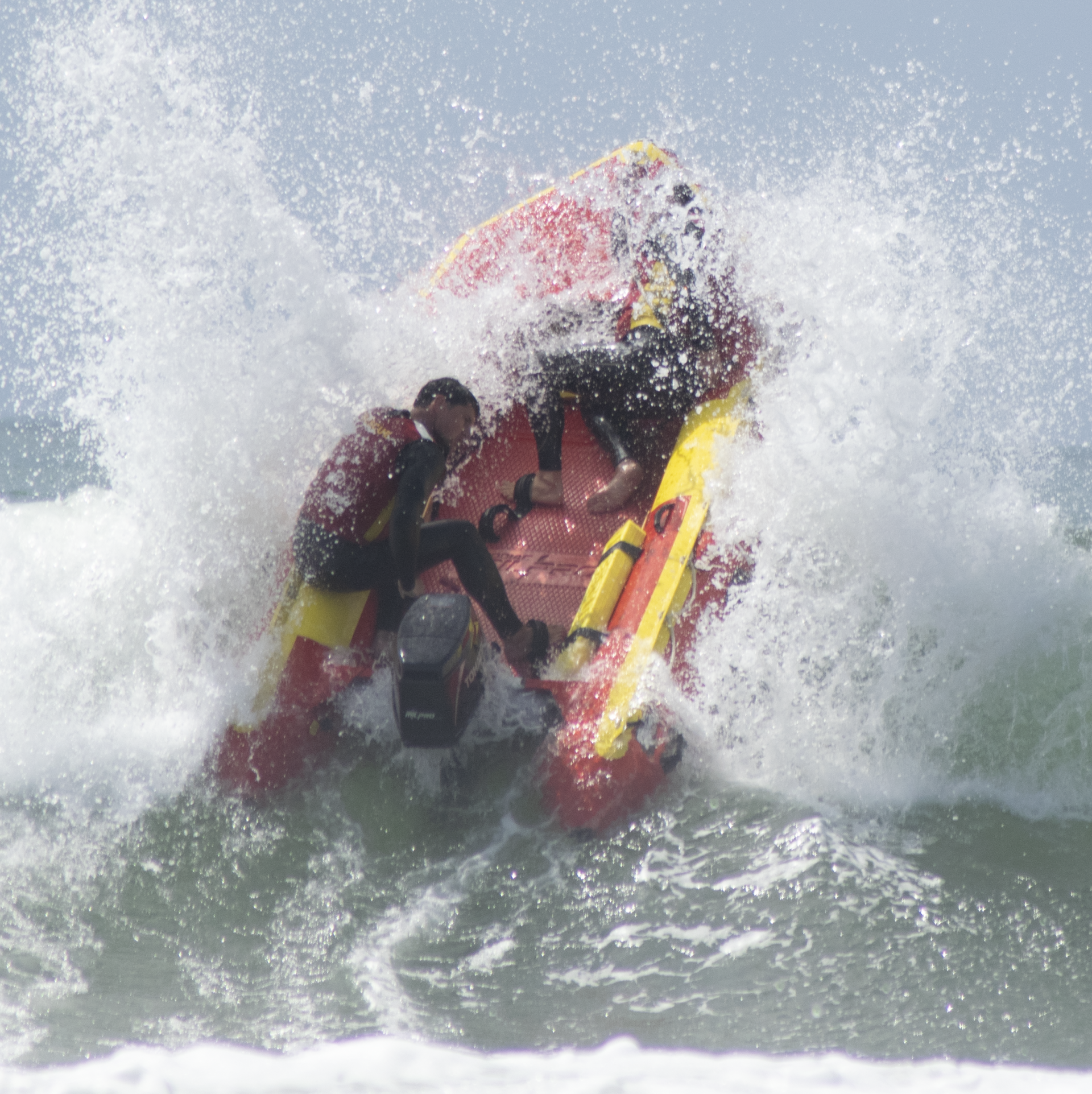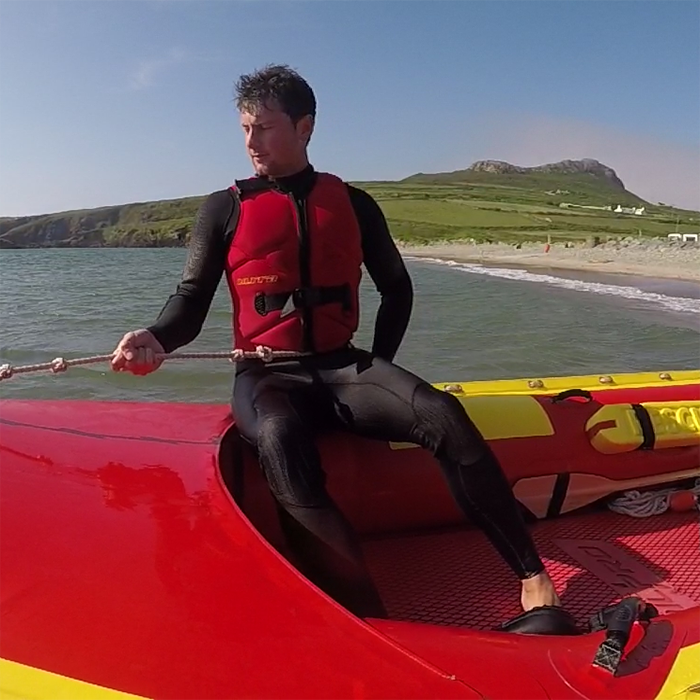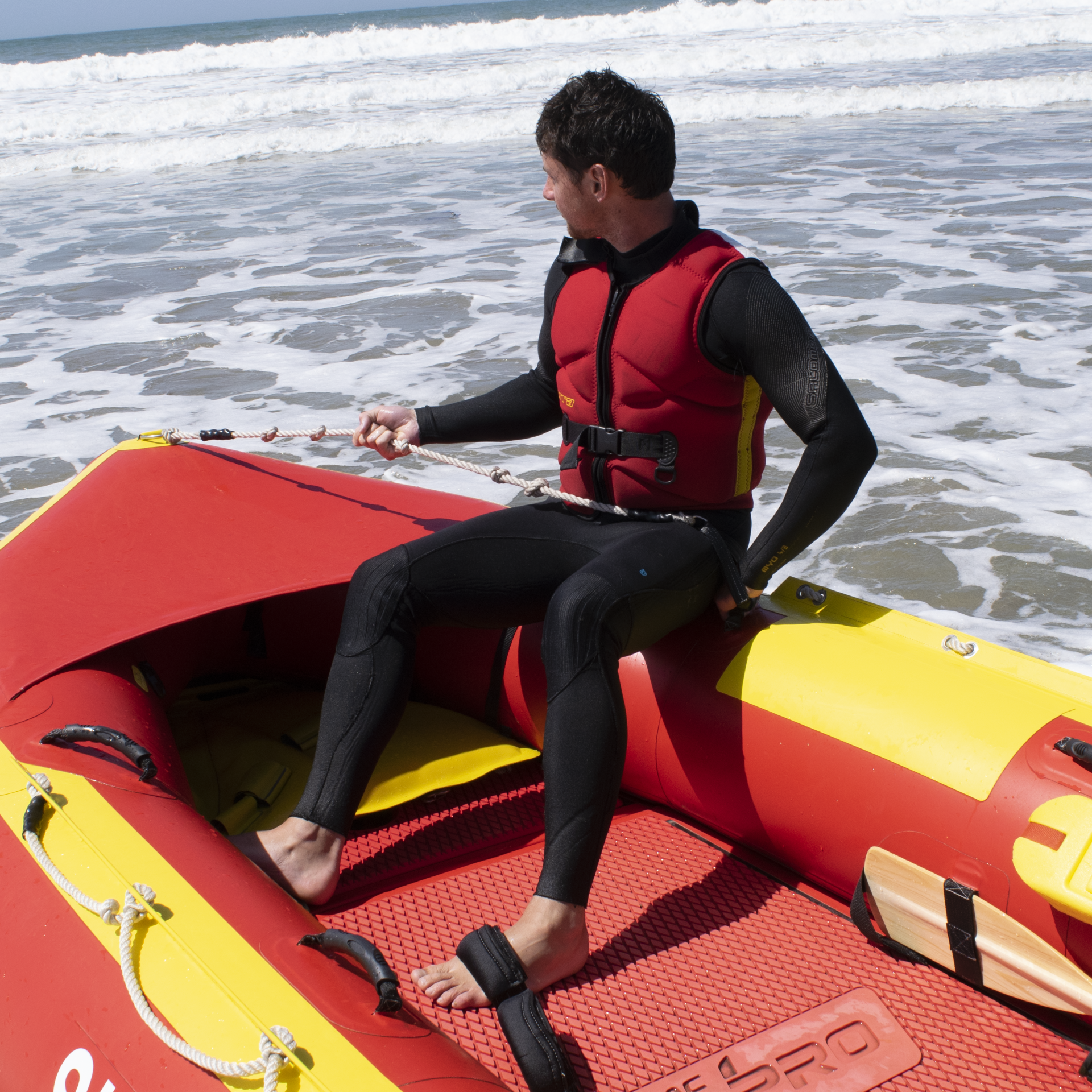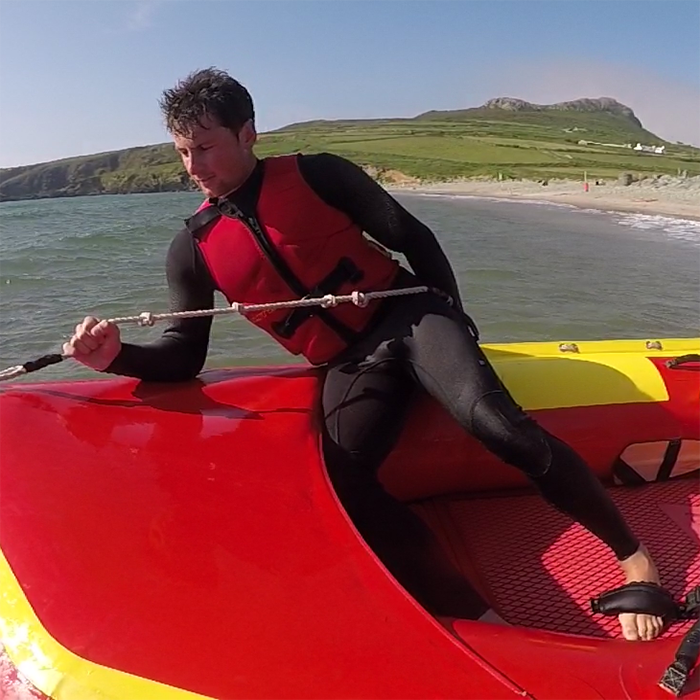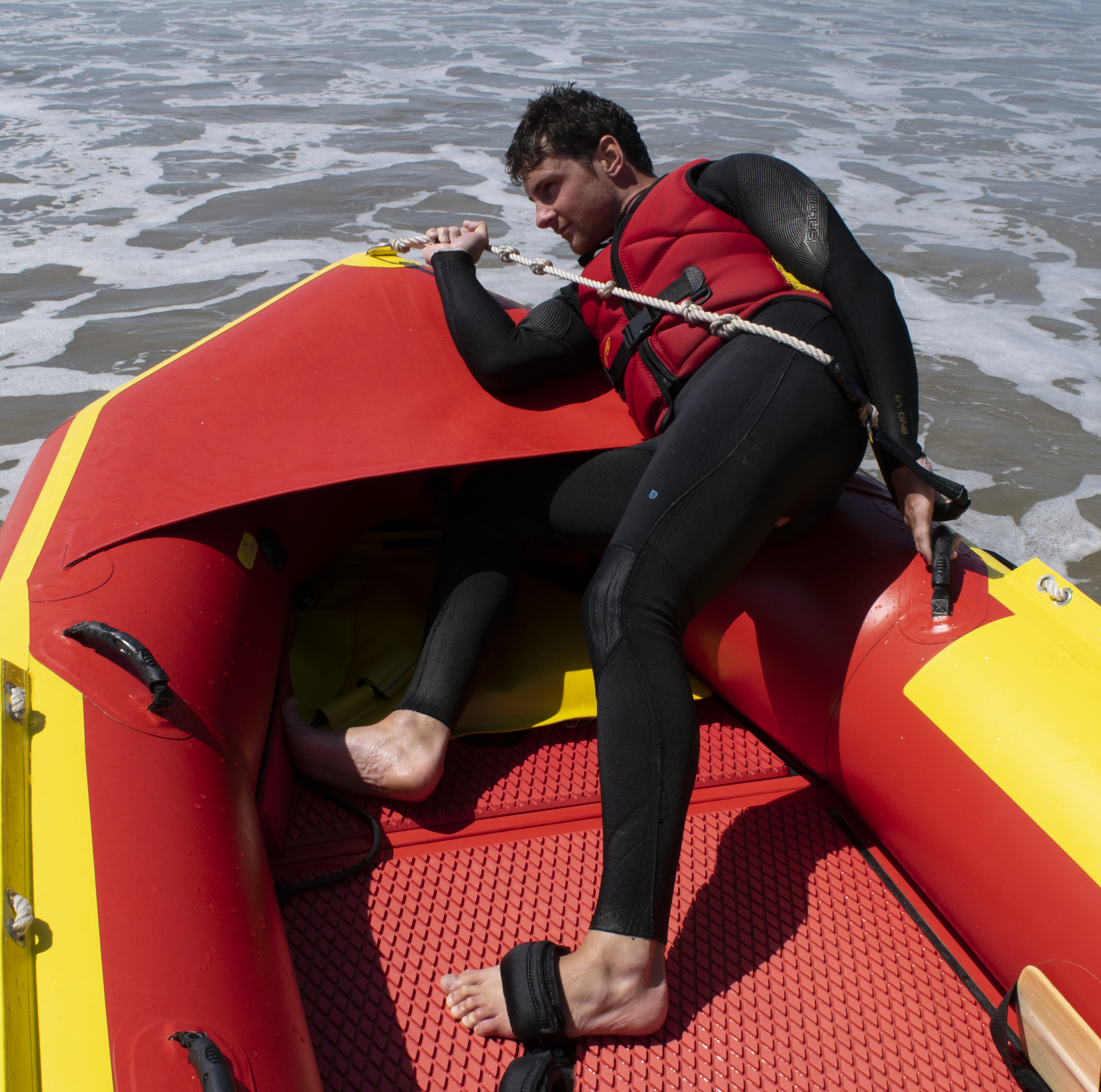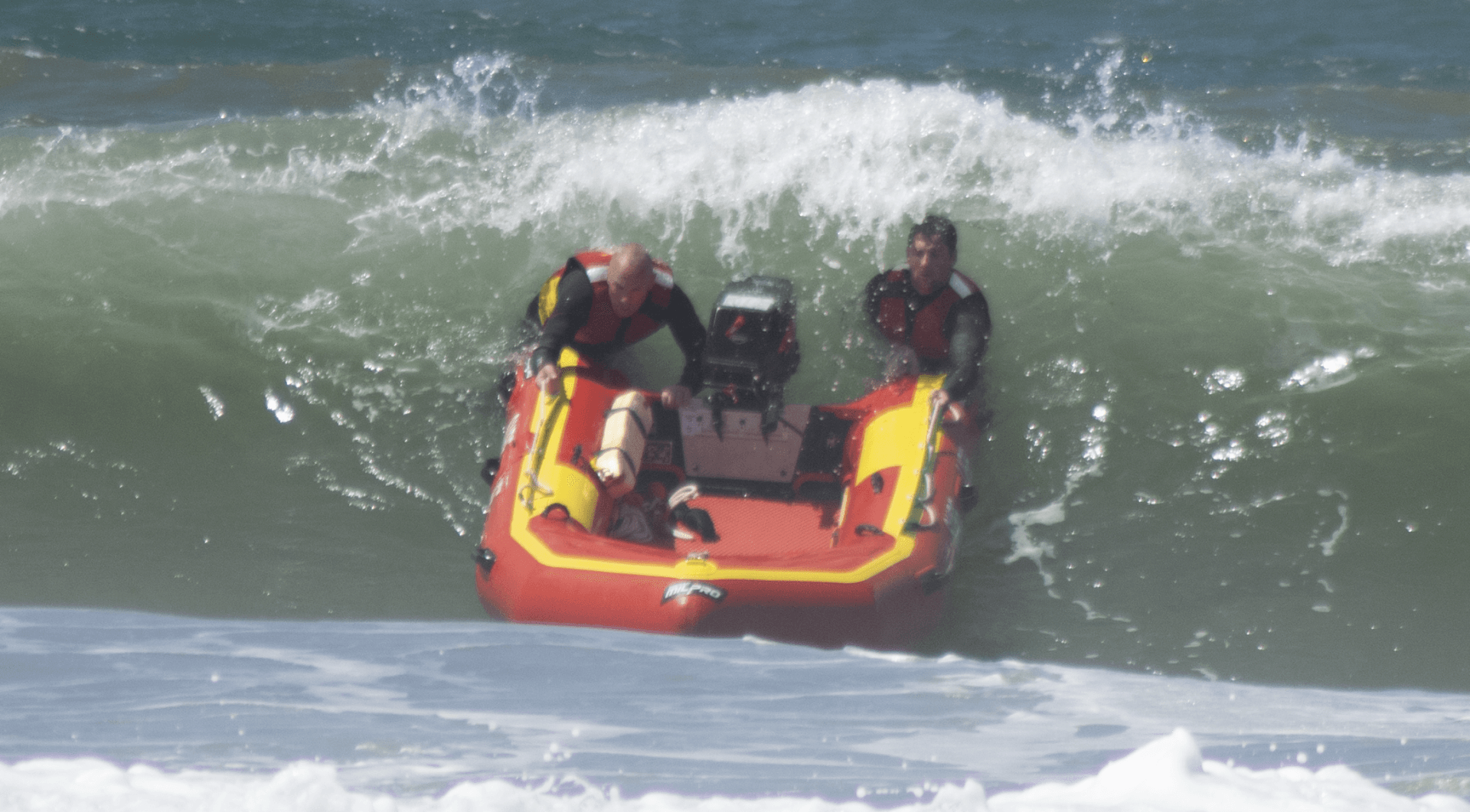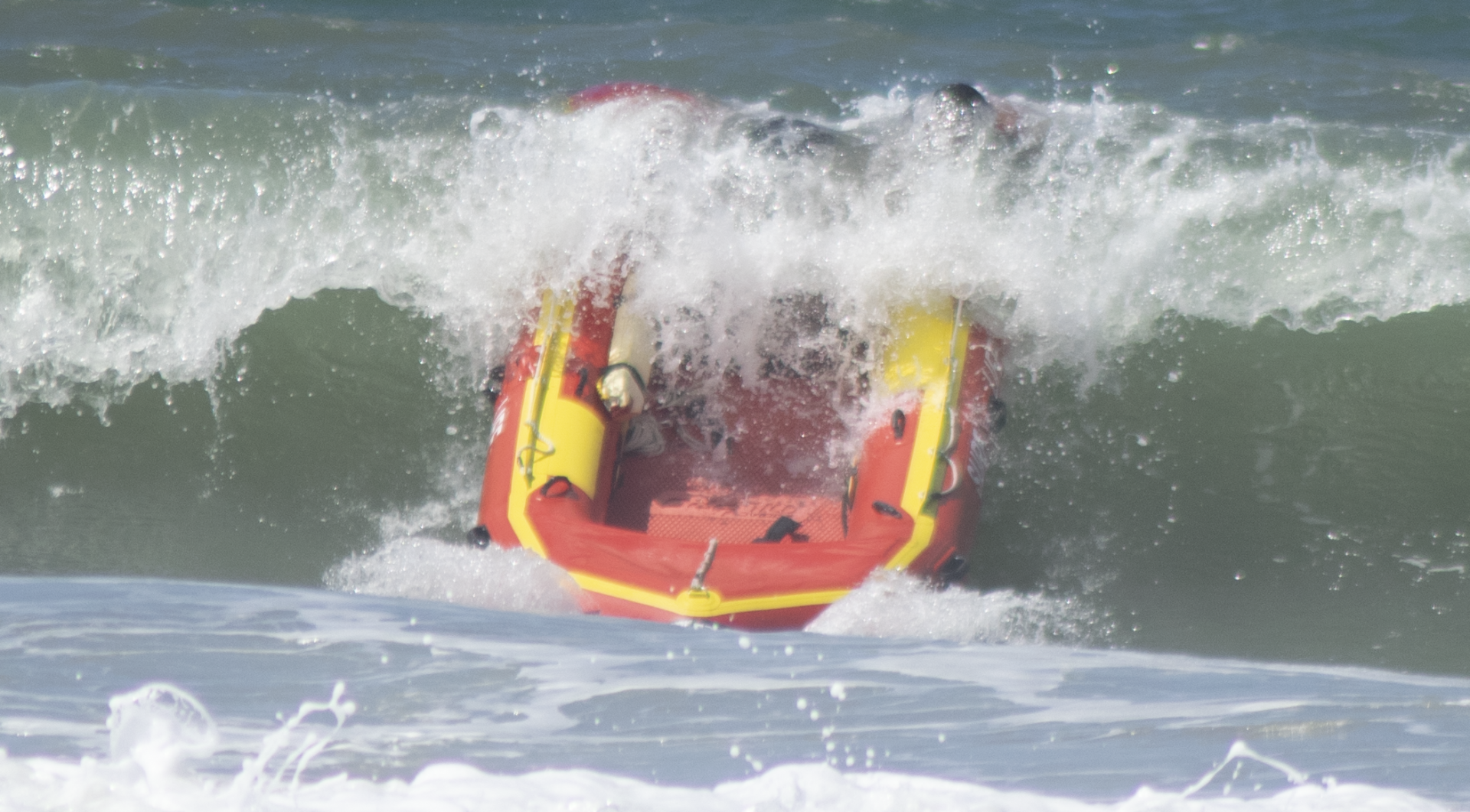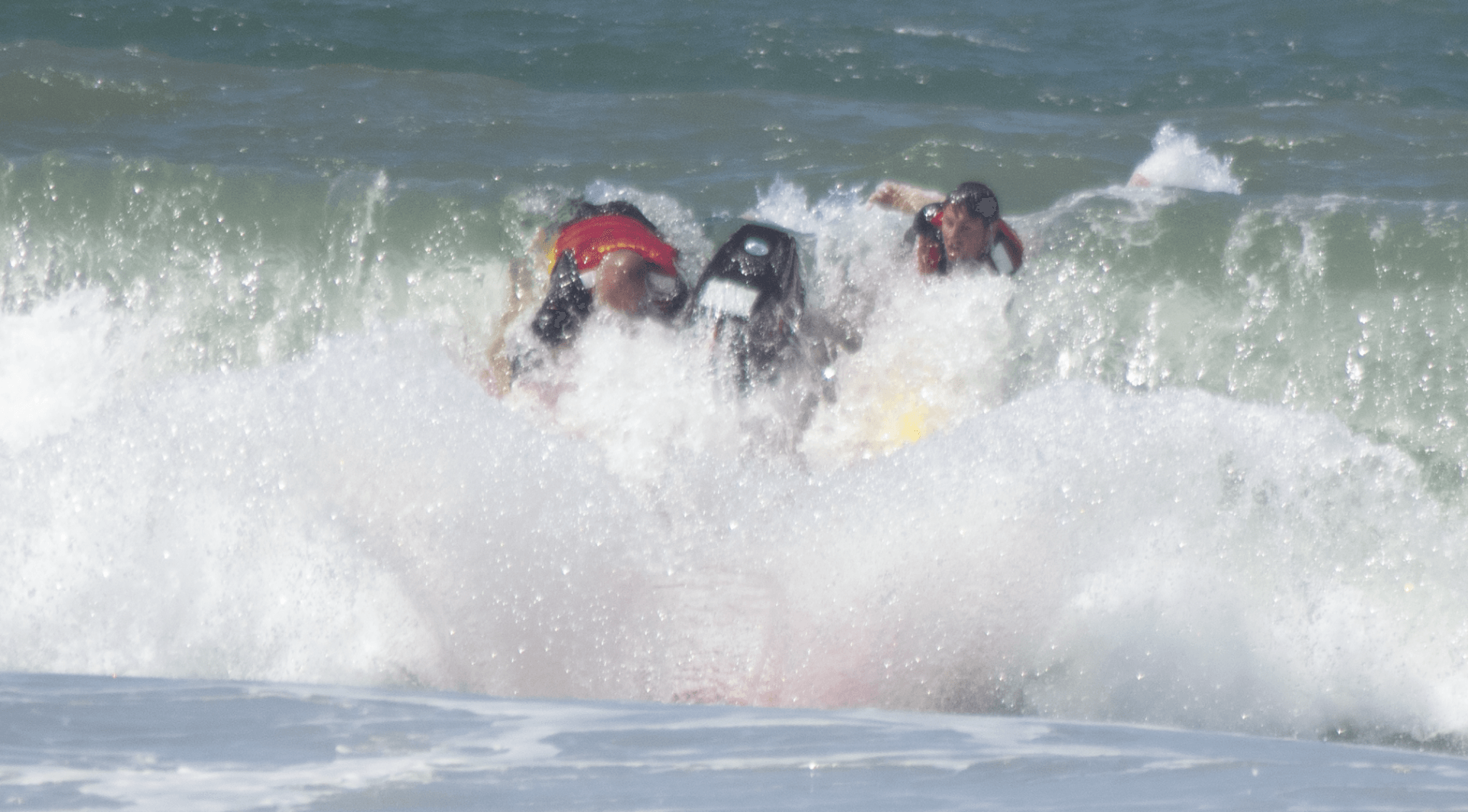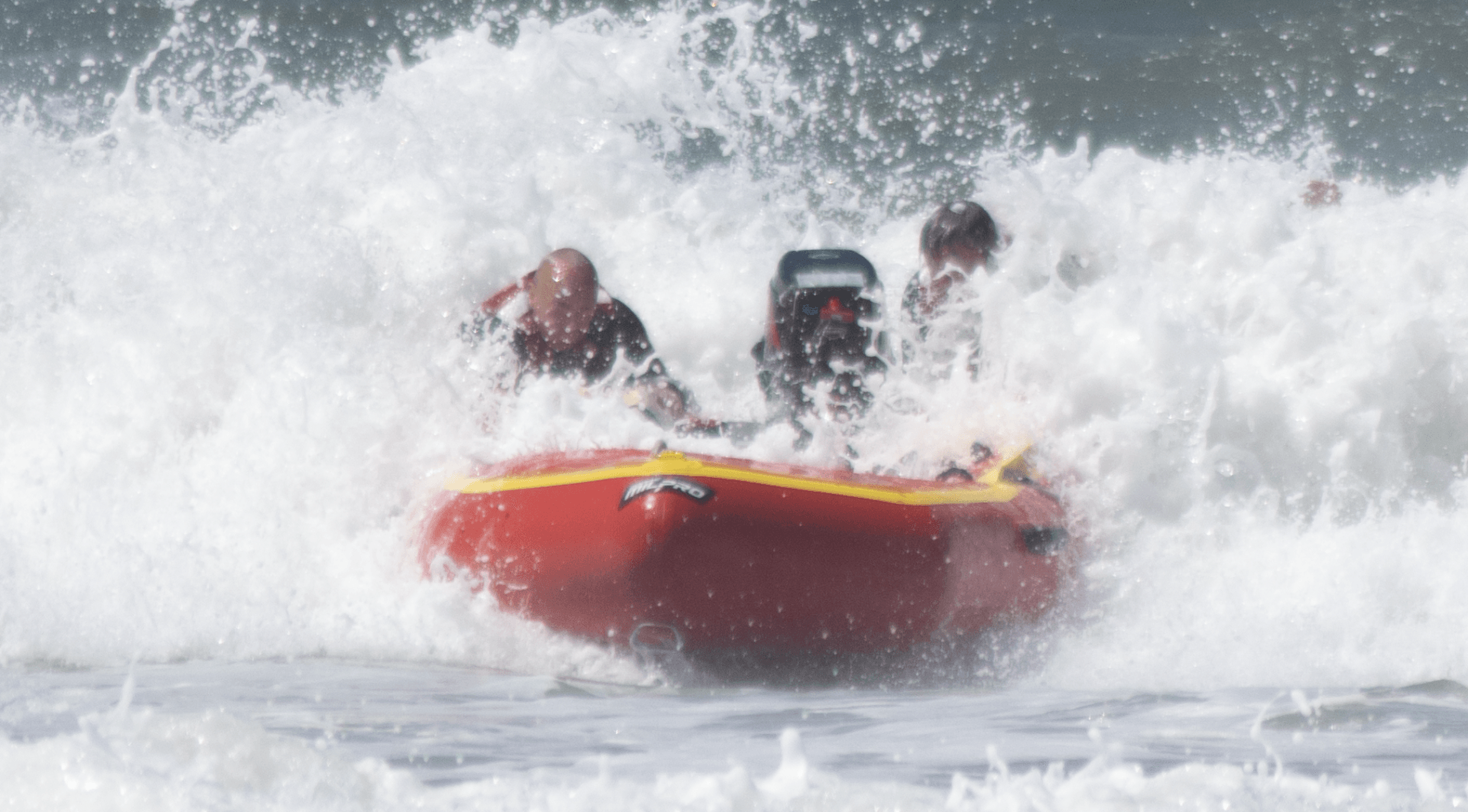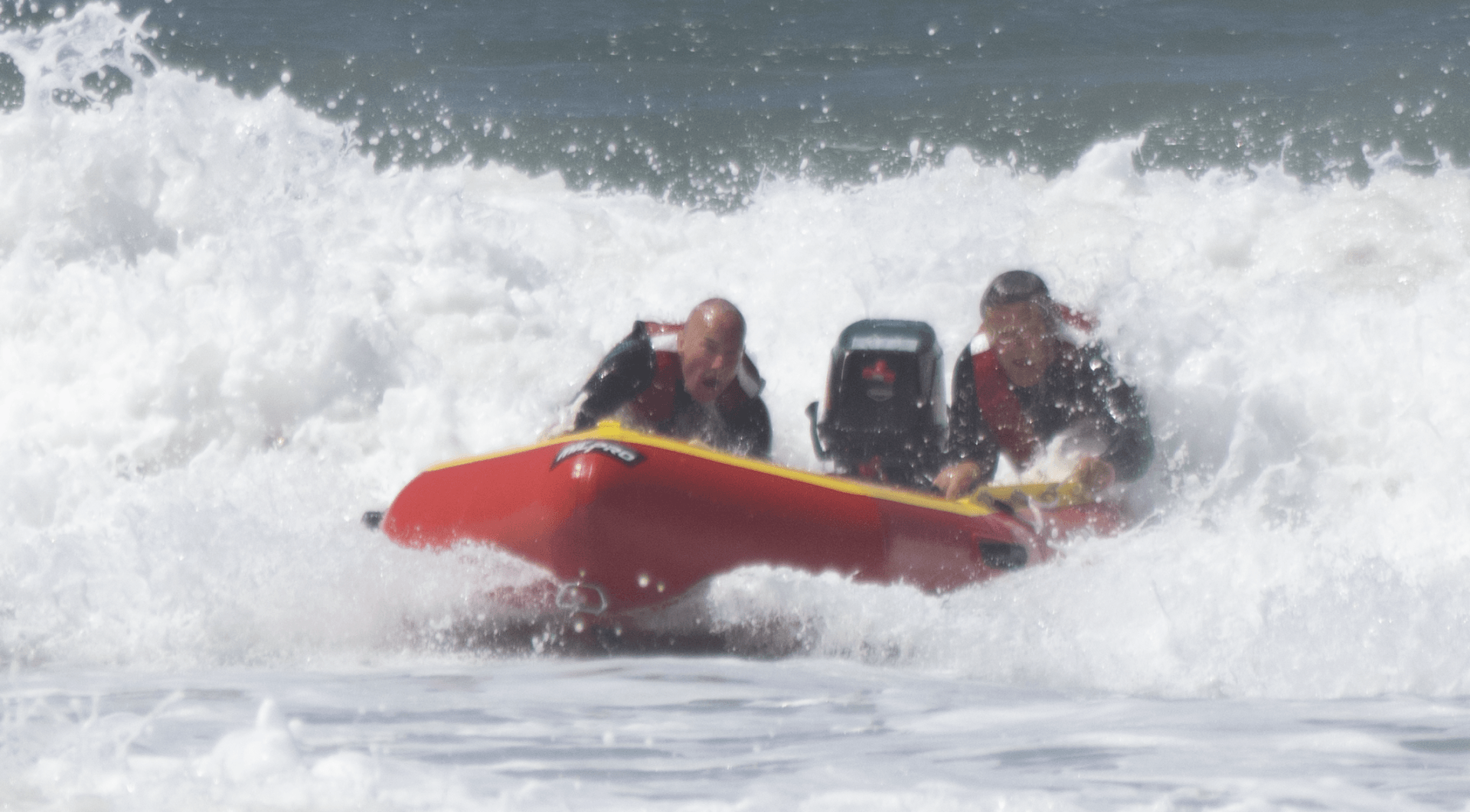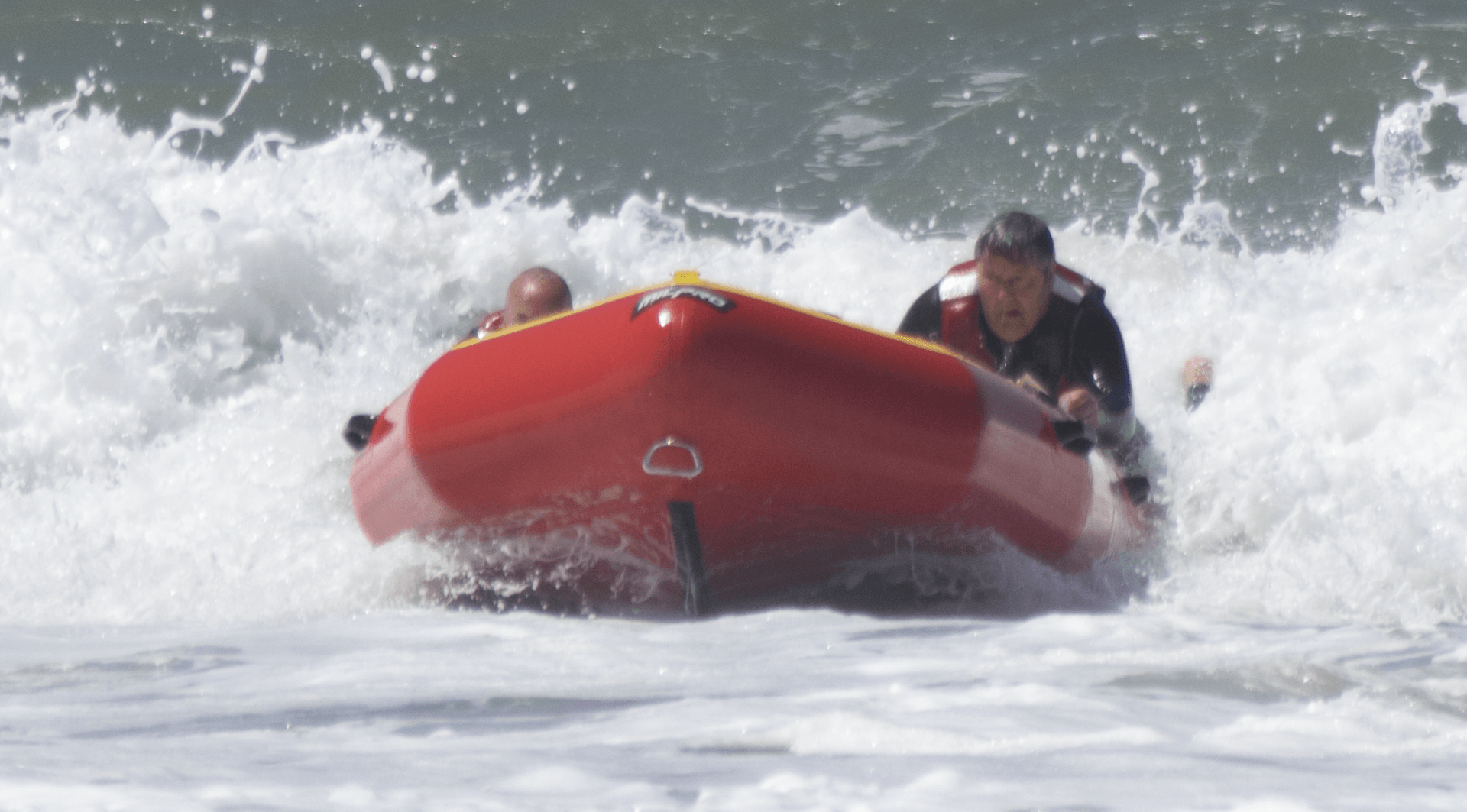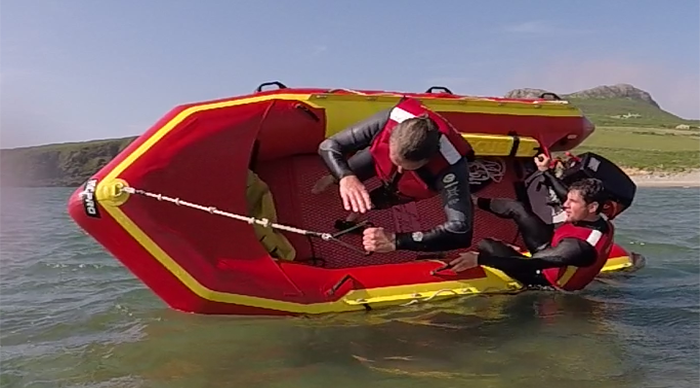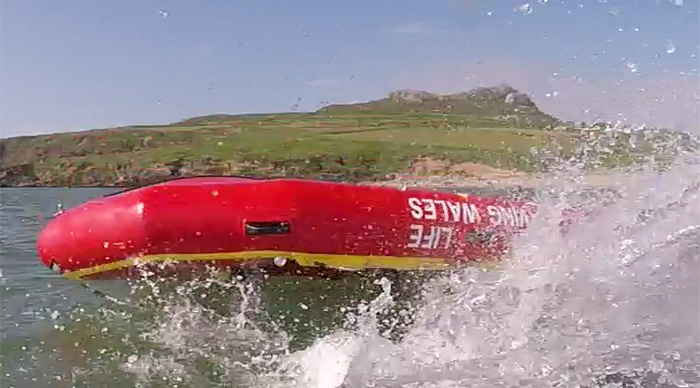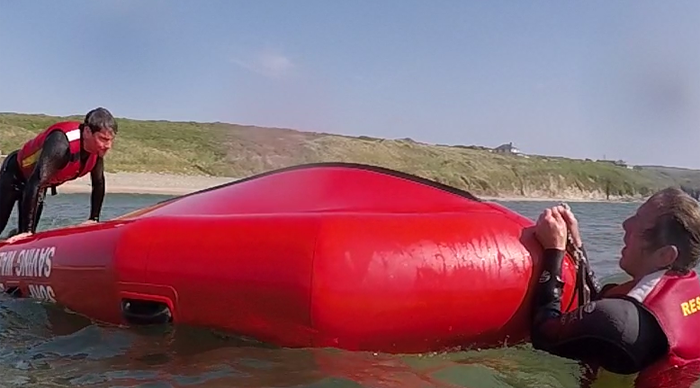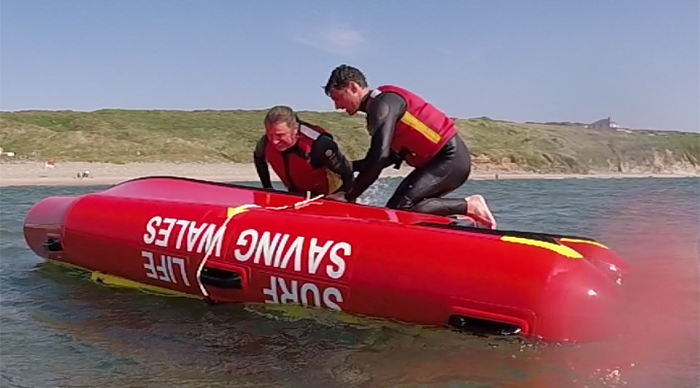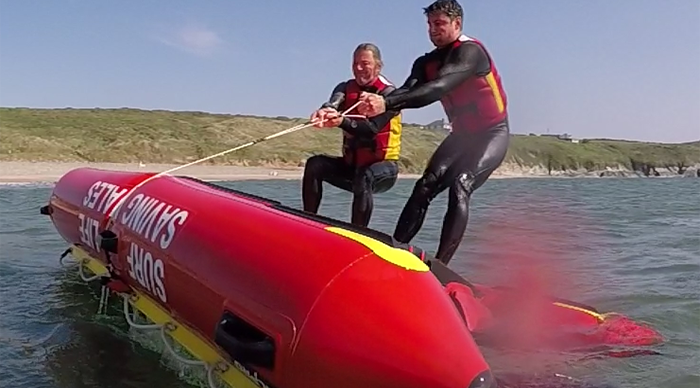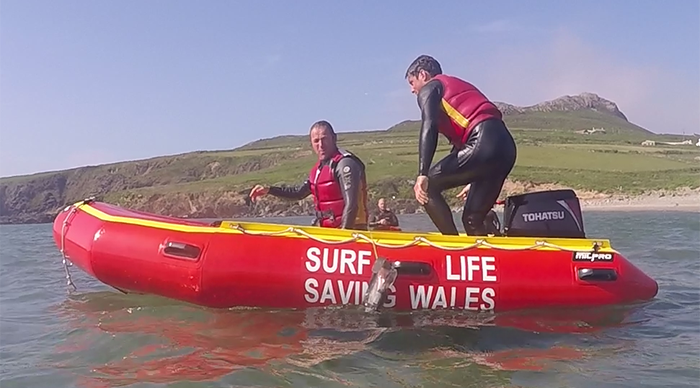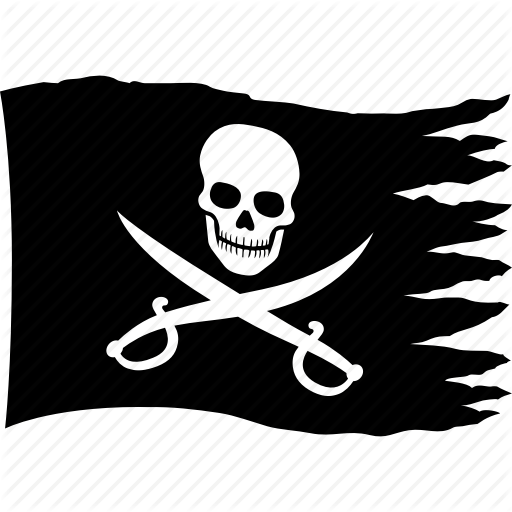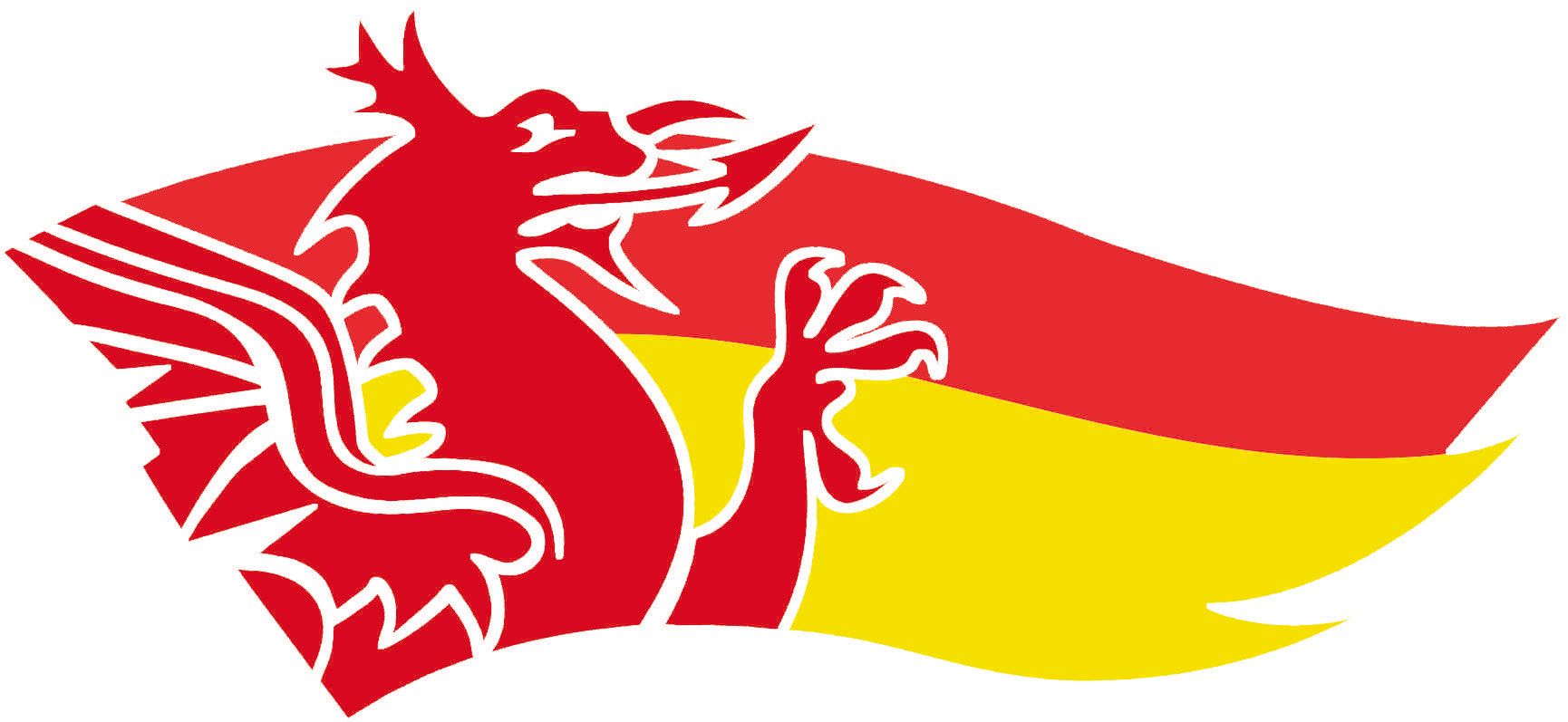OPERATING
This section is designed to demonstrate safe processes in operating an IRB to:
- Recognise and apply different IRB boarding and driving techniques.
- Recognise motor hazards.
- Understand and apply emergency procedures
Coxwain Boarding Skills and Techniques
There are three different techniques to boarding an IRB quickly and safely for the coxswain:
- ‘Jump’ entry.
- ‘Step’ entry.
- ‘Hip Roll’ entry.
'Jump' Entry
- Coxswain ensures the throttle handle is out of the way side and motor starter handle angled towards them for ease of use.
- Pushing up on the sponson allows for a clean leap into the IRB.
- During the leap the feet clear the sponson allowing for a good landing on the floor of the IRB.
- Having landed the motor is started and the throttle held waiting to command the crew person to enter.
- Applicable to athletic pirates.
'Step' Entry
- The step entry can best be completed in shallow water or just as a wave arrives lifting the boat as the step in starts.
- In this entry the motor is pointed away from the coxswain to give additional room.
- The coxwain clears the sponson and plants thier foot safely on the floor of the IRB.
- Using the sponson for balance an to help themselves up, they step up and into the IRB.
- Once in they sit on the sponson pulling the throttle towards them and start the motor and wait to command the crew person to enter.
- Applicable to pirates with long legs.
'Hip Roll' Entry
- The hip roll entry can be performed in most depths of water.
- As per the 'step in' entry the throttle is pointed away from the coxswain to give additional room.
- The coxswain jumps up and places thier hip that is closet to the sponson onto the sponson.
- Once balanced they then enter by swinging their legs up, over and into the IRB. Turning as they do so into a seated position.
- Once in the IRB they bring the throttle towards them and start the motor and wait to command the crew person to enter.
- Applicable to less athletic pirates.
Coxswain Driving Skills and Techniques
Negotiating the Surf
When manouvering the IRB through surf it is important to anticipate how the IRB is going to react to the various conditions, types and sizes of waves.
Smaller broken waves can be approached at an angle. However larger broken waves should always be taken head on so that the force of the broken wave is matched directly to the forward momentum of a moving IRB.
When going over broken or unbroken waves do not use excessive speed. An IRB should always be driven appropriately according to the conditions.
Excessive throttle in white water can cause ‘cavitation/aeration’ (spinning of the propeller in aerated water without forward motion). To mitigate this, back the throttle off and then ‘throttle on’ using enough throttle to get the IRB moving again.
When negotiating through the break, the coxswain should pick the easiest line in order to get out quickly and safely. This will depend on how the surf is breaking and how many potential hazards there are in the water.
A coxswain should back off the throttle before hitting waves, using reasonable throttle control in order to ensure the IRB travels up the wave without the craft leaving the water and becoming airborne.
It is important the coxswain remains in control of the IRB at all times - to become fully proficient in surf conditions you will need to commit to many hours of training and familiarisation in all types of surf conditions.
Parallel Running
Parallel running is often the quickest and safest way of negotiating through the surf. It requires the coxswain to keep a relatively constant speed with good judgement of the surf. The coxswain should only parallel run if they are confident with the conditions. The coxswain should also take these points into consideration:- Ensuring that there is sufficient water depth to avoid fouling the propeller guard on the bottom.
- Taking smaller broken waves at roughly a 45˚ angle.
- The IRB hits larger waves head on.
- Have enough throttle in reserve to take evasive action.
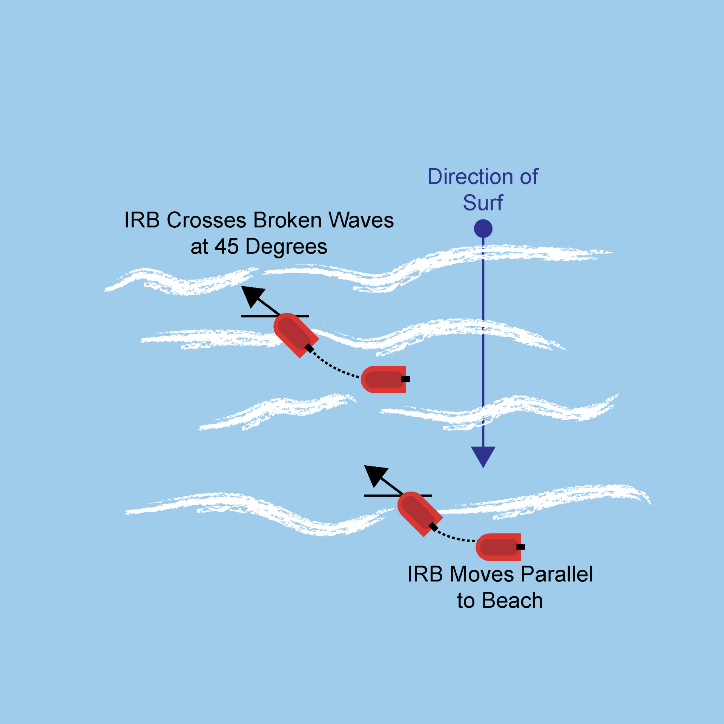
Punching a Wave
If a situation arises where the IRB has to punch through a large breaking wave, the crewperson should brace in position for impact. The coxswain should ensure that the bow of the IRB is positioned square to the oncoming wave.
They must ensure that on approach, they have sufficient power to accelerate under the lip and through the back of the wave. It should be noted that excessive speed on approach to a wave will result in the IRB becoming airborne.
So correct throttle control is essential The coxswain should position him/herself forward and in a locked in (punch) position, anticipating any wave impact.
Solo Driving
Solo driving is only intended when the crewperson has left the IRB (e.g. crewperson jumps overboard for a rescue).There are two recommended methods for solo driving:
1. Sitting on the sponson – coxswain will sit in normal position and lean towards the centre of the IRB.
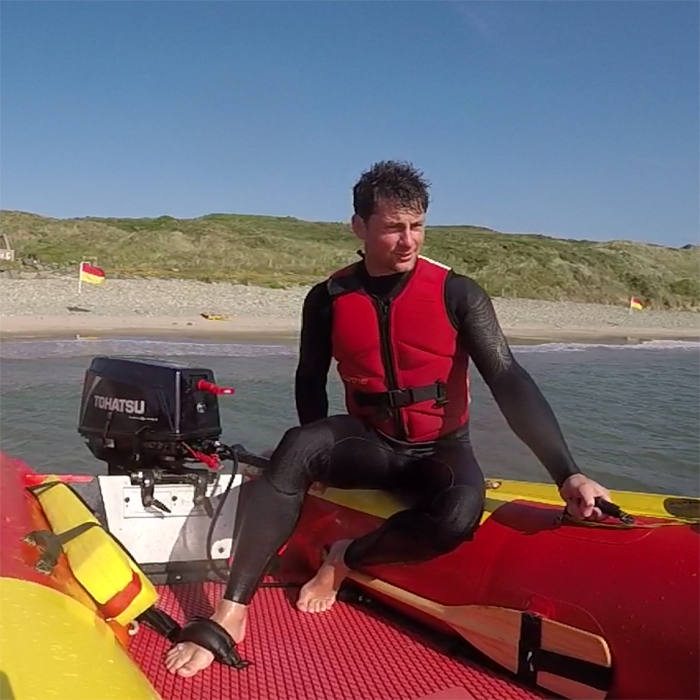
2. Crouching or kneeling on the IRB floor – this way the coxswain crouches or kneels on the IRB floor and maintains grip of the throttle with their right hand. This creates more stability when negotiating waves and allows easier starboard turns.
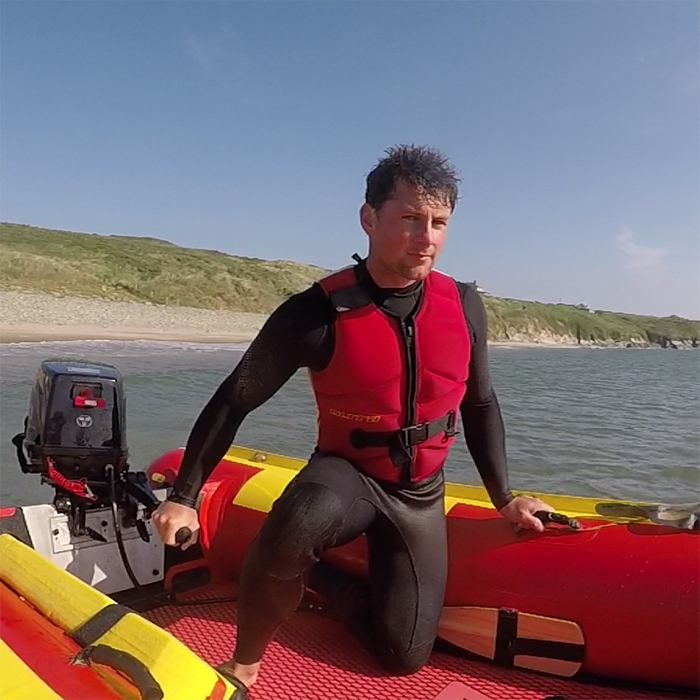
Crewing Skills and Techniques
When crewing an IRB in flat water, the crewperson should sit on the starboard pontoon and should:
1. Hold the bow rope in the left hand.
1. Hold the bow rope in the left hand.
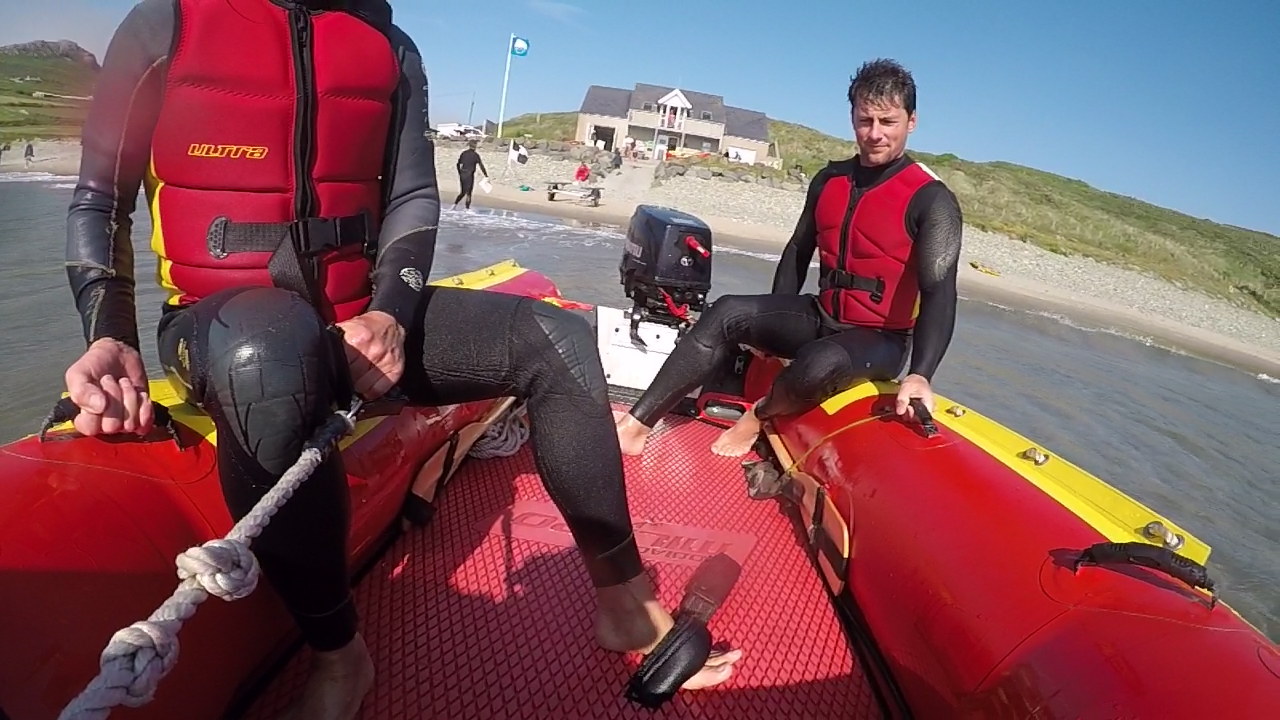
2. Keep a firm grip on the crew handle (with palm up).
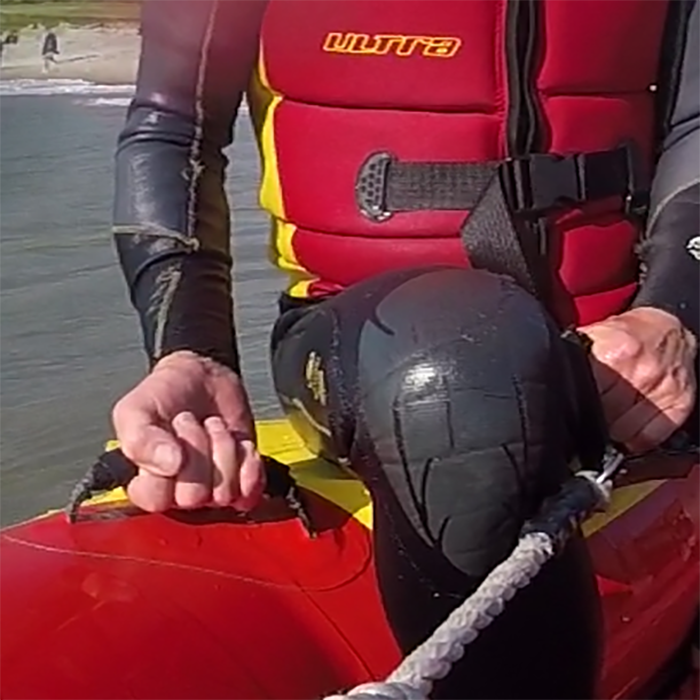
3. Use the correct foot strap as necessary (left foot only).
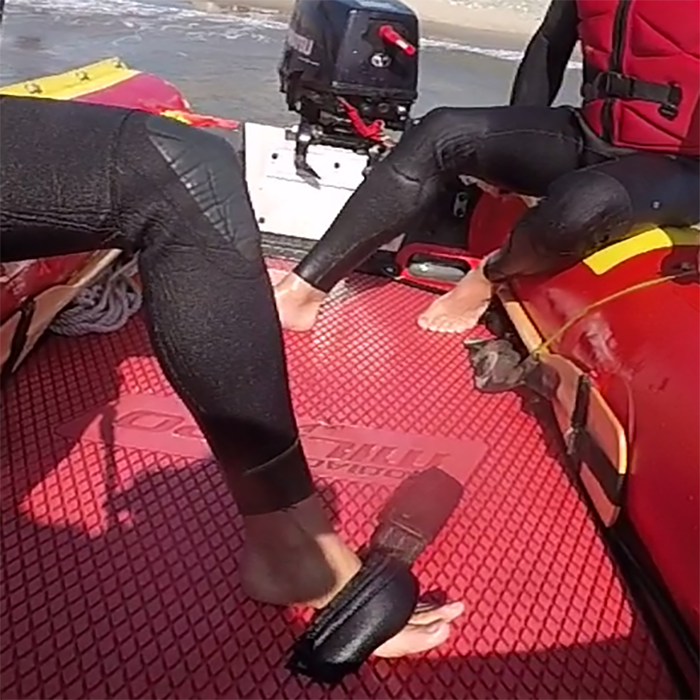
When the IRB is manoeuvring through surf/chop the ‘lock in’ position should be used. This allows the crew person to be further forward and more secure in the boat in order to minimise the possibility of a rollover and reduce risk of injury. When in the ‘lock in’ position the crew person should:
- Place left foot in the foot strap that feels most comfortable and bend knee slightly (around 10-15˚). Do not lock straight.
- Place the right knee in bent position under the spray dodger. The right foot can be placed in front of the floor board hinge or it can float freely under spray dodger.
- Hold Bow rope in right hand grasping one of the four knots approximately 200mm from bow rope D ring.
Grip the bow rope handle with the left hand and tense tightly behind the hip and downward over crewperson’s buttocks, also gripping crewperson’s board handle (if possible). This will make crewperson extremely secure. - The most important part of the lock in is the tension of the bow rope, as it provides stability and control for the crewperson.
- To maintain tension when gripping the bow rope handle rotate the hip toward the transom (providing the bow rope is at the correct length).Place the head in an upright position facing forward (not sideways) looking at the oncoming surf.
- Tuck the right elbow closely to chest, and place right shoulder on spray dodger
- Manage your weight accordingly. If the boat leaves the water after punching through a wave, you should maintain position of left hand and move your right hand toward the centre of the bow rope. Then rock your body weight back to land on your buttocks as opposed to landing on your hip. This will minimise the impact on your body.
Crew Boarding Skills and Techniques
There are three different techniques to boarding an IRB quickly and safely for the crewman:
- ‘Jump’ entry.
- ‘Step’ entry.
- ‘Hip Roll’ entry.
'Jump' Entry
- On the command of the coxswain the crew person enters the IRB.
- Using the sponson for leaverage.
- The crew person jumps iinto the IRB ensuring that their legs clear the sponson and land firmly on the IRB floor.
- Once landed they ensure that they 'lock' into a normal position and locate their feet in the most comfortable footstrap for their position.
- Applicable to athletic crew pirates with strong arms.
'Hip Roll' Entry
- The hip roll entry can be performed in most depths of water.
- On the command of the coxswain the crew person enters the IRB.
- The crew person jumps up and places thier hip that is closet to the sponson onto the sponson.
- Once balanced they then enter by swinging their legs up, over and into the IRB. Turning as they do so into a seated position.
- Once entered they sit on the sponson assuming the 'lock' position and locate their left foot in the most comfortable foot strap.
- Applicable to less athletic crew pirates without strong arms and long legs.
Motor Hazards
There are a number of in water hazards that can come in contact with the propeller guard or even the propeller when negotiating close to the shore. One of the main hazards is weed. If spotted these should be avoided at all times.
Indicators that the IRB motor could have fouled on debris could be:
Indicators that the IRB motor could have fouled on debris could be:
- Different engine tune (noise).
- Loss of power.
- Reduced responsiveness (steering).
- Vibration through tiller.
- Tilting motor.
- Putting motor into reverse.
- Cleaning guard with hand (motor switched off).

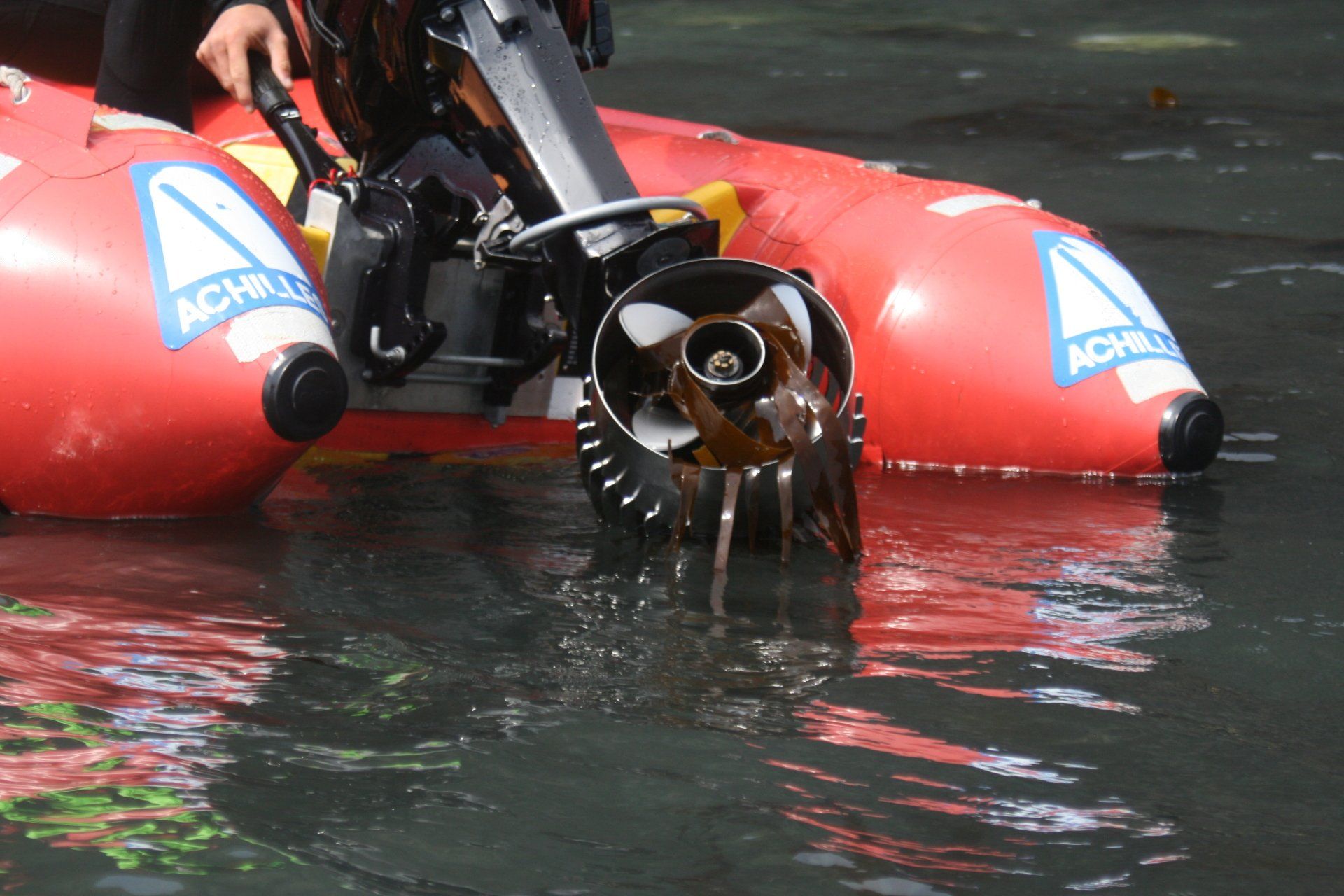
Other propeller hazards:
- Be aware of ropes when negotiating the IRB through cans or buoys in a harbour or during a competition. If motor comes in contact with a rope it should immediately be placed into neutral and lifted out of the water.
- When operating the IRB carry out regular checks to ensure that there is no risk of the rescue tube lanyard or tow-rope being drawn through the hull scuppers and into the propeller, fouling it.
Emergency Procedures
Manoeuvering the IRB to Shore with a Disabled Motor
In the event of motor failure in surf, the crewperson should hold onto the bow handle and enter the water over the bow of the IRB in order to keep it pointing into the oncoming waves. The Coxswain should place the disabled motor into neutral and attempt to restart.
If the motor will not restart, the IRB can be returned to shore with the paddles. Once in the break zone stow away the paddles and move the stern of the craft, adopting the ‘surfing IRB’ position.
In the event of motor failure in surf, the crewperson should hold onto the bow handle and enter the water over the bow of the IRB in order to keep it pointing into the oncoming waves. The Coxswain should place the disabled motor into neutral and attempt to restart.
If the motor will not restart, the IRB can be returned to shore with the paddles. Once in the break zone stow away the paddles and move the stern of the craft, adopting the ‘surfing IRB’ position.
Righting a Capsized IRB
Due to the nature of IRB operations it is possible a situation could arise where the IRB may capsize. If this situation arises follow to process as shown.
Due to the nature of IRB operations it is possible a situation could arise where the IRB may capsize. If this situation arises follow to process as shown.

